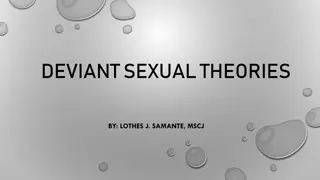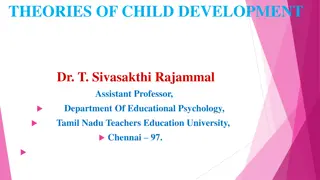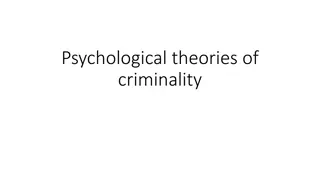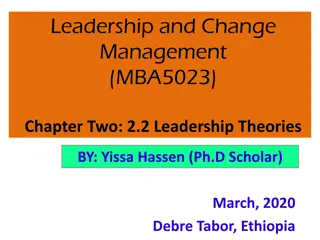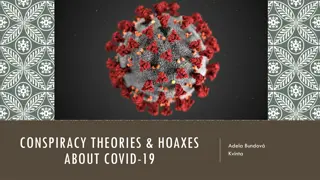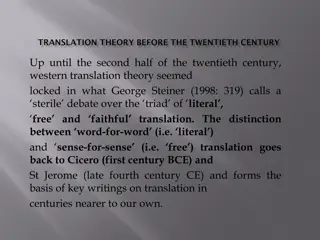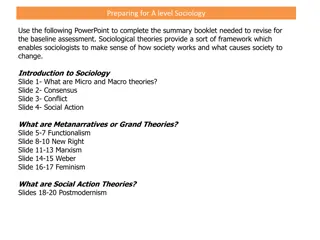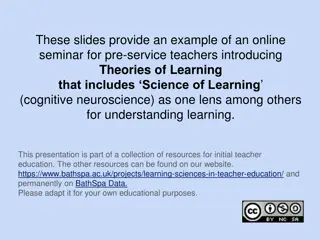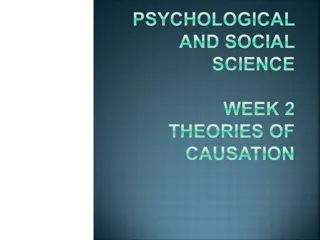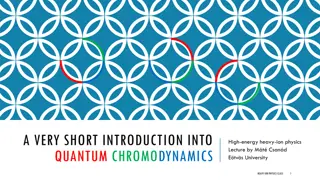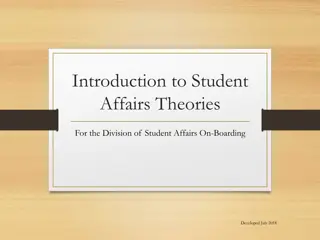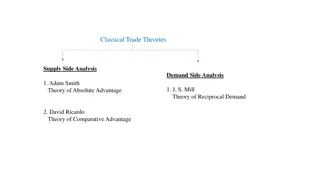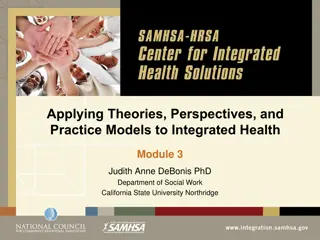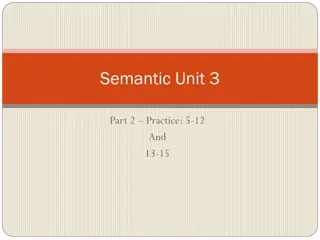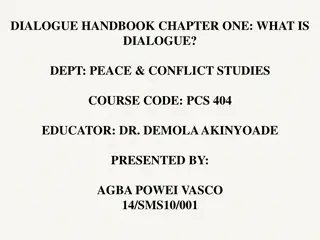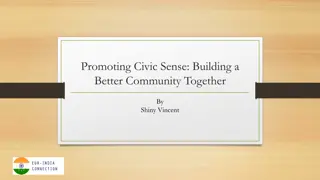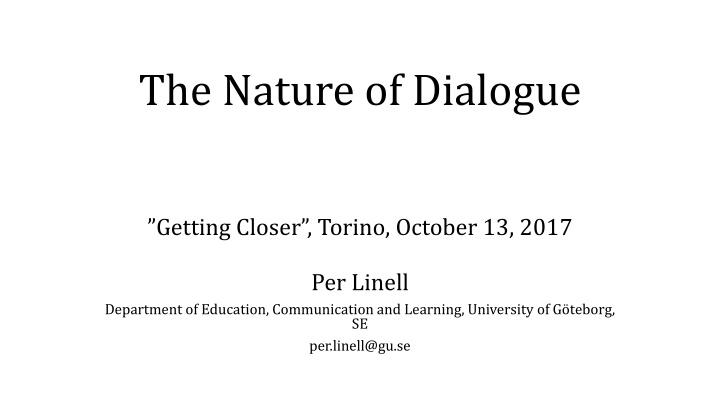
Dialogical Theories in Human Sense-Making
Dialogical theories provide a framework to describe human sense-making processes, emphasizing self-other interdependencies, interactivity, and dialogues in various contexts. This comprehensive exploration delves into the nature of dialogue, intrinsic to how individuals make sense of themselves, others, and the world. Through phenomenological perspectives and ten key points, the significance of dialogism in communication, cognition, and morality is highlighted. The major approaches, including dialogical meta-theory, Bakhtinology, and normative dialogism, offer insights into understanding dialogicality, interactivity, and the complex dynamics of dialogue. Emphasizing multi-faceted dimensions of dialogical theories, this study expands on dialogical pedagogy, linguistic pragmatics, and cultural-semiotic psychology, among other related concepts.
Download Presentation

Please find below an Image/Link to download the presentation.
The content on the website is provided AS IS for your information and personal use only. It may not be sold, licensed, or shared on other websites without obtaining consent from the author. If you encounter any issues during the download, it is possible that the publisher has removed the file from their server.
You are allowed to download the files provided on this website for personal or commercial use, subject to the condition that they are used lawfully. All files are the property of their respective owners.
The content on the website is provided AS IS for your information and personal use only. It may not be sold, licensed, or shared on other websites without obtaining consent from the author.
E N D
Presentation Transcript
The Nature of Dialogue Getting Closer , Torino, October 13, 2017 Per Linell Department of Education, Communication and Learning, University of G teborg, SE per.linell@gu.se
Dialogical Theories Dialogical theories constitute a theoretical framework for describing, explaining and understanding how human beings make sense of themselves, others, and the world. A phenomenological perspective: Sense-makings and apprehensions of the world are in focus.
Ten points: 1-5 1. Self-other interdependences: Against radical individualism 2. Self-other interdependences yielding responses and contexts in dialogical exchanges 3. Interactivity and intersubjectivity 4. Also internal dialogues 5. Dialogue in both situations and traditions
Ten points: 6-10 6. Third parties in dialogue 7. Monologues in a dialogically constituted world 8. Dialogism is very much about meaning, not only about systematicity and sequentiality in interaction 9. In the sense-makings of communication and cognition: sufficient understandings for current practical purposes (Garfinkel) in partially shared worlds (Rommetveit) 10. Moral aspects of dialogue
Dialogue, dialogicality, interactivity: The major approaches with keywords (Linell, 2017b) 1. Dialogical meta-theory Dialogicality, dialogism, self-other interdependence, responsivity, responsibility, double dialogicality, monologue in a dialogical world, third party, meaning potential vs. situated meaning 2. Bakhtinology 3. Text-oriented dialogism Bakhtin circle, history of ideas, philosophy, theology Dialogical text, media, recontextualisation, lifeworld, interdisciplinarity, polyvocality Responsive understanding, intrasequential interdependence, double dialogicality, polyvocality, heterogeneity, tension, third party, morality 4. Interactional dialogism 5. Dialogical self theory Dialogical self, I-position, internal dialogue, psychotherapy, international relations I, thou, communion, ethics, morality, responsibility, ideal dialogue, the Other, good dialogue (open, equal, symmetric, democratic) Dialogical teaching, democracy, professionalism 6. Normative dialogism and dialogue philosophy 7. Dialogical pedagogy 8. Extended dialogism Embodiment, self-other interdependencies, self-environment relations, action-perception cycles
Dialogue, dialogicality, interactivity The major approaches continued 9. Dialogic game model Dialogue game, mixed game, action-reaction, holism, utterance, unity of dialogue, sociobiology Communicative action, maxime, move, contribution, joint project Discourse, genre, activity type Social representation, discourse, tension 10. Linguistic pragmatics 11. Social pragmatics 12. Social representations theory 13. Activity theory, sociocultural theory 14. Cultural-semiotic psychology 15. Ethnomethodological Conversation Analys 16. Interactional linguistics 17. Utterance grammars Activity, societal organisation, socio-cultural context, socio-history, cultural-historical activity theory, thinking as internal interaction Cultural semiotics, dialogue between signs, experience Action, sequence, response, anticipatory utterance building and understanding, overall activities, workplace studies Interaction and grammar, linguistic organisation of utterances, response actions, discourse marker, collections of similar utterances Utterance, grammatical construction, responsive projective relations, on- line syntax, on-line production, incrementation, parallelisms (resonance) between adjacent utterances Cognition in discourse (interaction), rhetoric, emotion 18. Discursive psychology
Dialogue, dialogicality, interactivity The major approaches continued 19. (Formal) interaction grammar Interaction, context, non-sentential utterance, situation semantics 20. Mechanistic interaction theory Mechanism, sequence, prediction, anticipation, coding system 21. Multimodal interaction analysis Co-operative action, contextual configuration, lamination, semiotic resource, multi-dimensional analysis, interbodily dynamics, intercorporeality, intersubjectivity, interactional space Mirroring, mimesis, primary intersubjectivity, immediacy 22. Studies of infant interaction 23. Distributed Language Approach Distributed language, time-scales, first-order languaging vs. second-order language, interactivity, ecology, organism environment systems, dialogical system Relational materialism, intra-action 24. Organism-environment theories 25. Posthumanism Erasing the boundary between humans and other organisms and systems
Some general distinctions between approaches 1. external dialogue vs. sense-making and dialogicality of the mind 2. scientific vs. radical dialogism 3. descriptive vs. normative dialogism 4. social-discursive dialogue vs. solitary sense-making activities 5. dialogue in humanism vs. interactivity in posthumanism
Some references Bakhtin, Mikhail M. 1981. The Dialogic Imagination: Four essays. Transl. by Carol Emerson and Michael Holquist, edited by Michael Holquist. Austin, TX: University of Texas Press. Dreyfus, Hubert 1991. Being-in-the-world: A commentary on Heidegger s Being and Time . Cambridge, MA: MIT Press. Duranti, Alessandro; Goodwin, Charles. (eds.) 1992. Rethinking Context: Language as an Interactive Phenomenon. Cambridge: Cambridge University Press. Garfinkel, Harold 1967. Studies in Ethnomethodology. New York: Prentice-Hall. Goodwin, Charles 2000. Action and embodiment within situated human interaction. Journal of Pragmatics 32: 1489-1522. Hermans, Hubert & Hermans-Konopka, Agnieszka. 2010. Dialogical Self Theory: positioning and counter-positioning in a globalizing society. Cambridge: Cambridge University Press. Hustvedt, Siri 2010. The Shaking Woman or A History of My Nerves. New York (?) Linell, Per 2009. Rethinking Language, Mind and World Dialogically: Interactional and contextual theories of human sense-making. Charlotte, NC: Information Age Publishing. Linell, Per 2017a. Dialogue and the Birth of the Individual Mind. Journal of Deafblind Studies on Communication 3: 59-79. Linell, Per 2017b. Dialogue, dialogicality, and interaction: A conceptually bewildering field? Language & Dialogue 7: 301-336. Markov , Ivana. 2016. The Dialogical Mind: Common Sense and Ethics. Cambridge: Cambridge University Press. Pickering, Martin & Garrod, Simon. 2004. Toward a mechanistic psychology of dialogue. Behavioral and Brain Sciences, 27: 169-226. Rommetveit, Ragnar 1974. On Message Structure. London: Wiley. Schegloff, Emanuel A. 2007. Sequence Organization in Interaction. Cambridge: Cambridge University Press. Streeck, J rgen; Goodwin, Charles; LeBaron, Curtis 2011b. Embodied interaction in the material world: An introduction. In: Streeck, J., Goodwin, C. & LeBaron, C. (eds.), Embodied Interaction: Language and Body in the Material World. Cambridge: Cambridge University Press, 1-26. Weigand, Edda. 2010. Dialogue: The Mixed Game. Amsterdam: John Benjamins.

